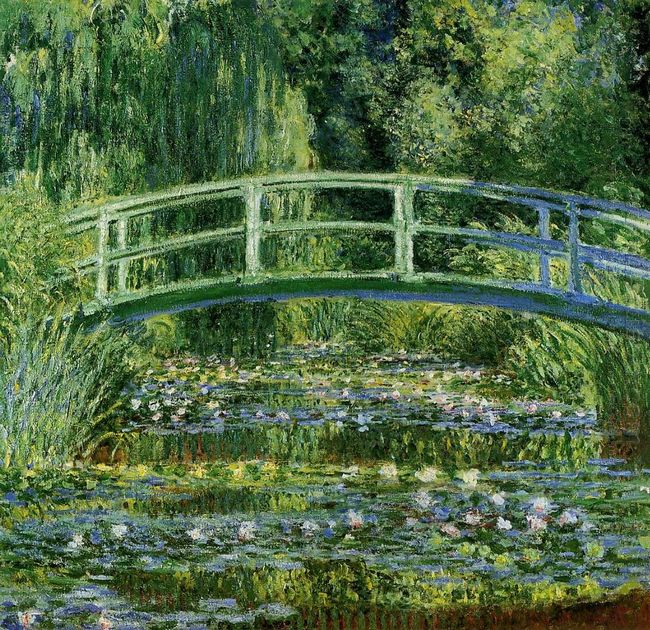In the life of artwork, Claude Monet painted many bridges, with the Japanese Bridge in his own Giverny garden being the most famous. Claude Monet who was born on 14th November, 1840 and died on 5th December, 1926 was a French Impressionism artist, why was he so interesting in Japanese bridges?
Monet was fascinated in Japanese art although he never been to Japan. He had participated in many Japanese dinners discussed Japanese art with others. He made friends with Japanese artists, sharing thoughts on arts together. Monet found that he shared something common with Japanese art. The Japanese art focused on simplicity which was the style the Impressionist Monet chose. Moreover, Monet had about 250 Japanese prints in his Giverny house which also inspired him paint landscapes in different way.
In 1883, Monet moved to Giverny. At that time, Monet sought a suitable location for painting where he could capture the same natural objects at different times of the days, in different seasons and from a variety of angles. Then he designed the garden in his Giverny house. He attempted to make one pond was in the shade, one another was in the sun. However, with a curved Japanese bridge spanning between the two pond, the sunlights shined the shaded area though the bridge. This creates a shade and light effect, and it was the heart of Monet’s water lilies painting.
Monet's Japanese bridge paintings are worldwide favored. In Europe, his Japanese bridge paintings are the most reproduced. Also in Japan, a garden which copied the same as the original painting was established in Kitagava. More than 200,000 visitors came to visit the garden in a year.






